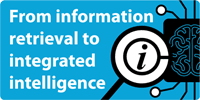 Controlling collaboration
Controlling collaboration
Jinfo Blog
10th May 2012
By James Mullan
Abstract
Organisations face a unique challenge when implementing any collaboration technology, namely how to encourage the viral, grassroots participation and growth, but at the same time keep the tool productive so that it doesn't spiral out of control. Because a major part of a collaboration tools success is people, can collaboration be controlled?
Item
Organisations face a unique challenge when implementing any collaboration technology, How do you encourage the viral, grassroots participation and growth, but at the same time keep the tool productive so that it doesn't spiral out of control? In this context, "out of control" means creating sites which have no real business purpose, have inconsistent information architecture or duplicate other sites or efforts. However, because a major part of a collaboration tool's success is people, can collaboration be controlled?
This is the question which many information professionals and information managers ask themselves on a regular basis. Because people are the heart of collaboration, there is no "one-size fits all" solution. Controlling what people can create is something that organisations take very seriously, especially in cases where the content being created might impact on that organisation's image.
One effort to enable better collaboration whilst reducing the likelihood of inappropriate activity can be seen in Hootsuite's introduction of Hootsuite Teams. Hootsuite Teams provides enhanced administrative tools for both defining teams and creating approval workflows. Used in conjunction with secure profiles, Hootsuite now offers a more sophisticated editorial workflow for companies who manage multiple social media profiles.
Whilst this is great for marketing teams, what are the options available for information professionals who have been tasked with managing their organisation's internal collaborative tools? An interesting post to read on this subject is "Managing the mess", which looks at how collaboration within an organisation can be managed effectively.
There are some useful takeaways from this post including the long established idea of having internal champions. These internal champions serve two purposes: The first is to push initiatives along by encouraging usage. The second, and perhaps more important, role is to act as an educator. As educators, internal champions can demonstrate not only how to create content how to select which tools to use based on the type of content.
Ultimately these champions will help colleagues understand that using a collaboration tool isn't a burden and that they can be effective in creating and managing knowledge.
Another way to control collaboration is by having a governance plan in place. A good governance plan will address the technology issues including things like platform functionality, server support and service level agreements, as well as other less-tangible issues, which are often referred to as organisational issues. These will include permissions and access levels, training, business processes and the essential business needs of a collaboration tool, which will include usability, design, navigation, ownership and information retention.
Sometimes governance is referred to as "controlled freedom", which I think is a good way to describe a situation in which employees are allowed to create content but with restrictions on what they can do.
The implementation of collaboration technology without a governance plan of some sort puts an organisation on a slippery slope towards chaos and will usually result in the failure of the initiative. Taking the time at the start of a project to create a plan that is both flexible and adaptable will allow organisation to control collaboration…at least to some extent!
Other resources:
- Blog post title: Controlling collaboration
- Link to this page
- View printable version
- Collaboration can be hard to define
Friday, 20th April 2012 - Space shuttles and parrots: Providing incentives for collaboration and knowledge sharing
Tuesday, 20th March 2012
From information retrieval to integrated intelligence - with Dow Jones
23rd January 2025
How to thrive in 2025; AI and news with Dow Jones; AI contracting questions answered; information risk; end-user education
7th January 2025
- How to thrive in 2025; AI and news with Dow Jones; AI contracting questions answered; information risk; end-user education
7th January 2025 - AI contracting and licensing; Strategic information managers; End-user training
10th December 2024 - Contribute to our research into end-user product training
10th December 2024
- Jinfo Community session (TBC - Mar 2025) (Community) 20th March 2025
- Jinfo Community session (TBC - Feb 2025) (Community) 25th February 2025
- From information retrieval to integrated intelligence - with Dow Jones (Community) 23rd January 2025


